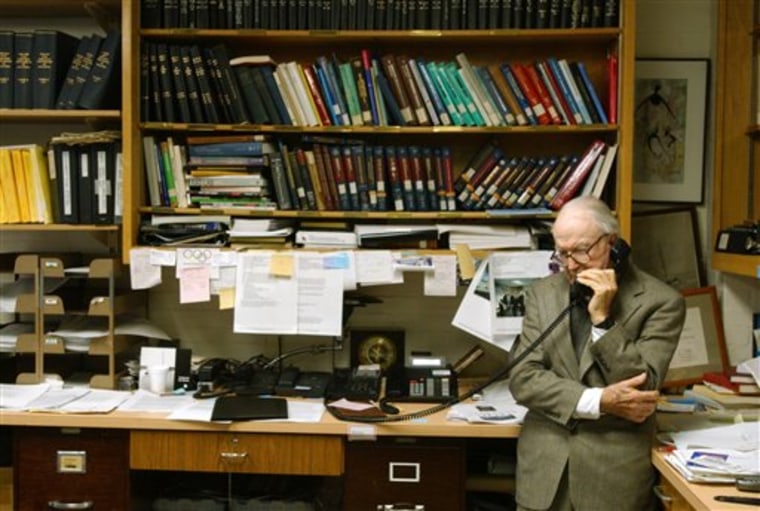Britton Chance, a scientist whose work in biomedical optics helped develop spectroscopy as a noninvasive way to diagnose medical problems, has died. He was 97.
Chance died of heart failure at the Hospital of the University of Pennsylvania in Philadelphia on Nov. 16, Marc Kaplan, a spokesman for Penn's School of Medicine said Tuesday.
In 2003, Chance worked to further the science of polygraphs — lie detectors — by developing an imaging machine that could detect blood-flow changes in brain areas stimulated by deceit.
The following year, he began testing a device that women could use at home for detecting breast cancer in its earliest stages. The prototype used near-infrared light that traveled deep into breast tissue to detect metabolic changes.
Besides his work in science, Chance was also an avid sailor who won a gold medal on the U.S. sailing team at the 1952 Helsinki Olympics. He remained active into his later years.
At 88, Chance could be seen riding a bicycle from his home to his Penn research lab, where he worked 12 hours a day, six days a week, The Philadelphia Inquirer reported.
Chance was born in Wilkes-Barre, Pa., in 1913. While still a teenager, his passion for sailing led him to invent an auto-steering device to prevent vessels from sailing off-course.
He went on to earn two doctoral degrees, one in physical chemistry from the University of Pennsylvania in 1940 and another in biology and physiology from Cambridge University in 1942.
During World War II, Chance helped develop a radar system at the Massachusetts Institute of Technology that allowed blimps to spot German submarines off the Eastern Seaboard.
Chance then returned to Penn where, from 1949 to 1983, he was an enzyme researcher, professor of biophysics and physical chemistry, and director of the Eldridge Reeves Johnson Foundation for Medical Physics.
He was elected to the National Academy of Science in 1954 and 20 years later received the National Medal of Science. After 1983, he became an active emeritus professor at Penn, where the Stellar-Chance Laboratories are named after him.
